Reopening office spaces for employees is perhaps the most crucial decision you’re going to take in 2021. Let’s look at some key factors to consider before getting things back to normal.
We live in an era of confusion when it comes to business continuity and growth. Due to the global pandemic, almost every industry had to undergo a significant disruption by adopting to remote work environment overnight. With the right planning, patience, and perseverance, we slowly and steadily acclimated to the rapid shift in the way we work. A few years ago, remote work seemed to be just a possibility of the future. However, it quickly became the new reality for almost the entire global business landscape.
Fast forward to the present, industries are slowly getting back on their feet with offices opening up and employees getting back to work. Yet the world is still far away from getting back to normal. A survey conducted in 2021 shows that only 28% of workers in the US are getting back to the office. The major reason for this is many companies prefer remote working in order to save costs and employees experiencing better work-life balance.
Additionally, the emerging threat of the Delta variant of Covid-19 also resulted in companies disbanding office functions and reincorporating remote work patterns.Now the question is, should your business resume working remotely or opening the doors of office for all employees just like the old days?
In this blog, we shall understand the current business environment in terms of on-premise and remote work to help you make better decisions on whether to return to the office or resume the remote work or have a little bit of both.
Managing on-premise employees
With the advent of rapid vaccination drive in the USA and India, many companies will open their offices by allowing employees that have completed their vaccination course. Although, it’s important to stay vigilant on hygiene and maintenance of office space to prevent any possible virus spread in the future. Sanitizing workplace and instructing employees to maintain hygiene practices like washing hands regularly.
Other factors to be considered while allowing employees to return to the office space are the employee’s current health status and medical history, the scope of work, and whether they have elderly people or children at home who can be under high risk because of community transmission. We should encourage employees that check even one of the above categories to continue working remotely.
Another important thing to consider before opening office spaces is to check your company’s readiness to adapt to the new safety guidelines. Having a regular thermal scanning at the entry and exit is a must to monitor the temperature regularly to prevent possible community spread in the office. The center for disease control and prevention also recommends wearing light cotton masks and maintain 6 feet distance at the workplace whenever possible. It is also important to highlight that the mask is not to prevent the wearer, but your co-workers.
In case of an on-premise employee gets infected by COVID-19, he/she should immediately self-quarantine at home and take sufficient rest before continuing work from home. The office premises and equipment should be thoroughly cleaned and sanitized and they should refrain other employees from using the contaminated workspace and tools until the sanitization process completes.
Considering all the factors mentioned above, it’s quite apparent that opening up the offices brings its own set of unique challenges for companies. The question is: is your company ready for the challenge opening up your office space?
Role of Leadership and HR
From the leadership and HR perspective, the decision of opening the office space is the most challenging decision. Not only from the productivity perspective, but also from the “human” perspective, and it all begins with establishing a logical rationale for segregating employees into two categories; those working in the office and those continuing with the work from home or nomadic work approach. The rationale should be clear enough to avoid any misinterpretation.
You can achieve the right balance of both employee types by exercising the following practices:
- Make it clear that the only employees allowed to work from the offices are the ones who have completed their vaccination dose, are free from any pre-existing medical condition that makes them an easy target for viruses, and don’t have at-risk members at home.
- There should not be any difference between employees working in the office and those working remotely. It’s quite obvious but makes a huge impact on the mind of employees in the long run.
- Employees working from home must have dedicated software installed on their devices that monitors time spent on the devices, websites visited, and applications used.
- By increased monitoring on remote employees along with the on-premise one, the perception of “easy-life” can be eliminated.
- Creating and distributing a written document among employees builds trust among them. Make sure that you’re highlighting that the office premise is used only by employees who absolutely need it.
Effective communication between leadership and HR can help in understanding the current needs and thought process of employees and create the most impactful and flexible hybrid work environment without compromising on productivity.
Harmony among on-premise and remote employees
A study conducted by Kissflow shows that 51% of employees prefer to work remotely and 75% of employees feel less distracted at home than in the office. Remote work has gained tremendous popularity in the last few years as it has improved employee’s work-life balance.
However, it’s also important to monitor and regulate their productivity just like the on-premise employees. It’s also important to ensure seamless communication between remote and office employees to maintain an uninterrupted workflow. Having a collaborative digital work platform allows both nomad and on-premise employees to seamlessly share the workspace and insights with a feeling of virtual connectivity
The best way to do so is to establish a secured cloud computing environment where both categories of employees store, manage, and access mission-critical data. Not only that but collaborative tools like Microsoft 365, SharePoint, Power BI, etc. created a collaborative workspace to maximize business efficiency and productivity.
Conclusion
Reopening office space for employees is perhaps the biggest decision you’re going take in 2021. Considering the unpredictability of the business environment with an impending threat on the Delta Covid-19 variant, you need to understand all the parameters thoroughly before enabling the new working system.
In any case, your core focus should be on employee’s security and physical/mental health while boosting company’s productivity.
VBeyond Corporation is here to help you simplify the entire process and make your business future-ready as a Diversity Focused Global Recruiting Firm, serving customers across industry segments or domains.


